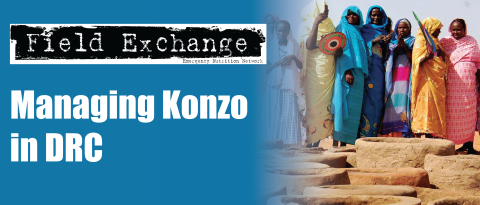Fluctuations in wasting in vulnerable child populations in the Greater Horn of Africa
Summary of research1
A recent study set out to estimate levels of and fluctuations in wasting prevalence in children in arid and semi-arid areas of the Greater Horn of Africa according to livelihood (pastoral, agricultural, mixed migrants) season or month and year. Surveys conducted between 2000 and 2006 were used for this study.
Currently, invariant levels of wasting prevalence are used as triggers for humanitarian intervention. For example, the current World Health organisation (WHO) guidelines on 'Management of Nutrition in Emergencies' puts forward a classification for severity of malnutrition based on prevalence of wasting irrespective of population type. Similar invariant trigger levels are adopted by SPHERE even thought there is evidence that pastoral children's growth patterns differ considerably from those of children in populations with other livelihoods. Furthermore, variations by season are not well established, since most large surveys are infrequent and are not matched by season. However, previous data from clinic reports from nine African countries have indicated seasonal fluctuations of around 5 percentage points in prevalence of low-weight-for-age.
Results from around 900 area-level nutrition surveys (typical sample size about 900 children) were compiled and analysed. These surveys were carried out by nongovernmental organisations (NGOs0, coordinated by UNICEF, in vulnerable areas of Eritrea, Ethiopia, Kenya, Somalia, southern Sudan and Uganda. Demographic and Health Survey (DHS) and Multiple Indicator Cluster Survey (MICS) were used for comparison. Data were taken from measurements of children 0-5 years of age (or less than 110 cm in height).
The study found that among pastoral child populations, the average prevalence of wasting (<-2 SD weight-for-height) was about 17%, 6-7 percentage points higher than the rates among agricultural populations or populations with mixed livelihoods. Fluctuations in wasting were greater among pastoralists during years of drought, with prevalence rising to 25% or higher. Meanwhile, prevalence among agricultural populations seldom exceeded 15%. This difference may be related to very different growth patterns (assessed from DHS and UNICEF/MICS surveys), whereby pastoral children typically grow up thinner but taller than children of agriculturalists. Wasting peaks are seen in the first half of the year, usually during the dry or hunger season. In average years, the seasonal increase is about 5 percentage points. Internally displaced people and urban migrants have somewhat higher prevalence rates of wasting. Year-toyear differences are the largest and loosely correlated with drought at the national level but subject to local variations.
The study also found that growth measured by stunting compared with wasting from 0 to 5 years of age - as seen from national DHS/MICS data - diverges dramatically between different livelihood groups. Wasting prevalence decreases with better socioeconomic status in pastoralists, whereas the response to better socioeconomic status in agriculturalists tends to be decreased stunting prevalence.
The authors of the study conclude that given the difference in growth patterns by livelihood, different criteria are needed in evaluating wasting prevalence. Also, tracking changes in wasting prevalence over time at the area level, e.g. with time-series graphical presentations, facilitates interpretation of survey results obtained at any given time. Roughly, wasting prevalence exceeding 25% in pastoralists and 15% in agriculturalists (taking account of timing) indicates unusual malnutrition levels. Different populations should be judged by populations-specific criteria, and invariant prevalence cut-off points avoided; interpretation rules are suggested. Survey estimates of wasting, when seen in the context of historical values and viewed as specific to different livelihood groups, can provide useful timely warning of the need for intervention to mitigate developing nutritional crises. The survey data also suggest that internally displaced people (IDPs) were only marginally more malnourished than the surrounding populations. Returnee populations were not more malnourished. Groups that had migrated to small towns in North Eastern Kenya, mostly in Turkana in the surveys, were similar in wasting prevalence to the pastoral populations outside towns. However they were of particular concern, as they were becoming dependent on food distribution and were without viable livestock herds to allow reestablishment of normal livelihoods.
The authors also conclude that a move toward more regular reporting could substitute for some of the small-scale surveys currently being implemented. For example, reporting from clinics and regular surveys of sentinel areas, such as those undertaken by the arid and semi-arid lands project in North Eastern Kenya, could provide underlying monitoring. This would allow fewer surveys to be launched in response to other signs of problems, such as drought reports and population movements. Furthermore, survey methods themselves could be improved, especially if fewer surveys meant more resources available per survey. Priorities would include better sampling methods and, in some cases, investing in better age determination to allow estimates of stunting and underweight.
1Chotard. S et al (2010). Fluctuations in wasting in vulnerable child populations in the Greater Horn of Africa. Food and Nutrition Bulletin, vol 31, no 3 (supplement), pp S219-S233. 2010
Imported from FEX website


